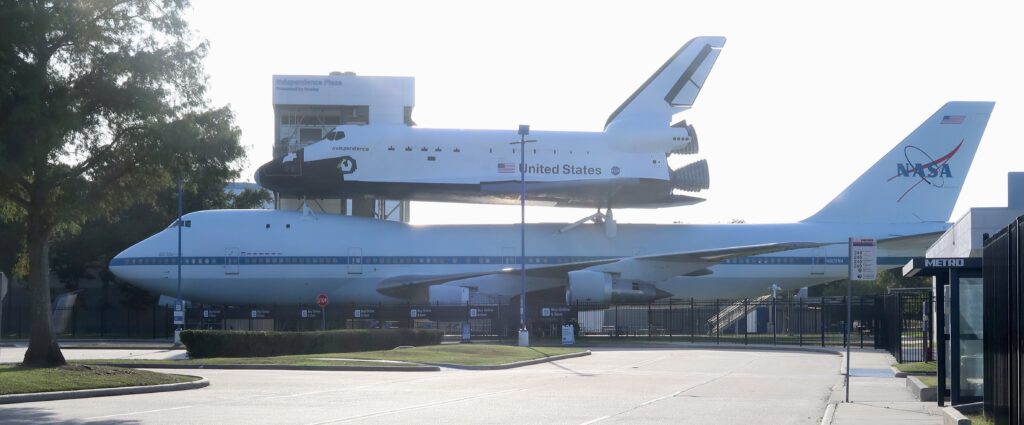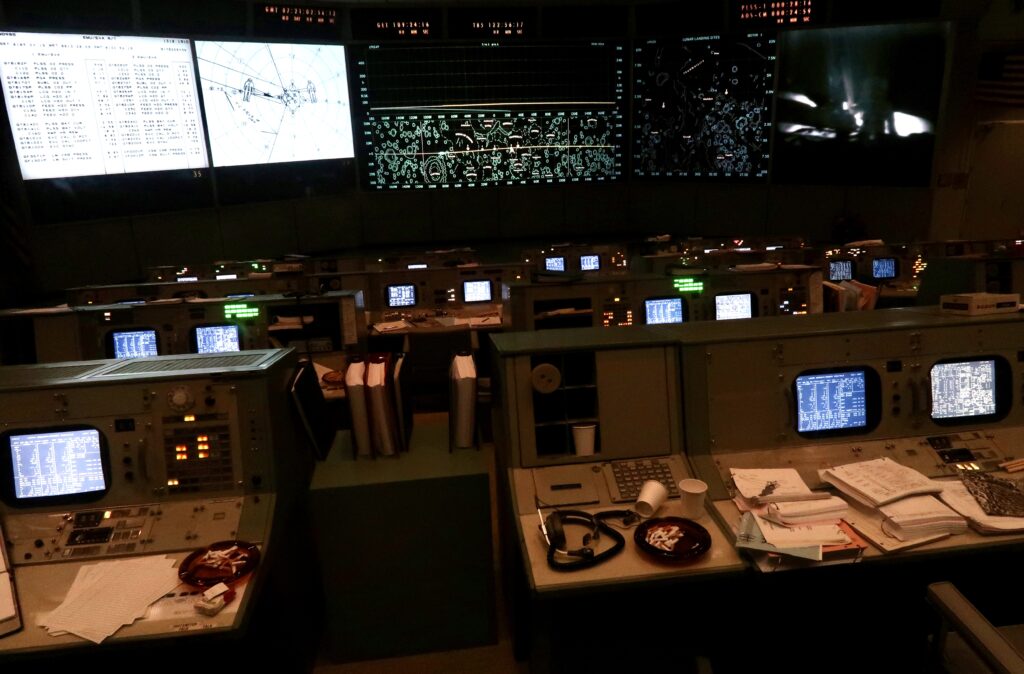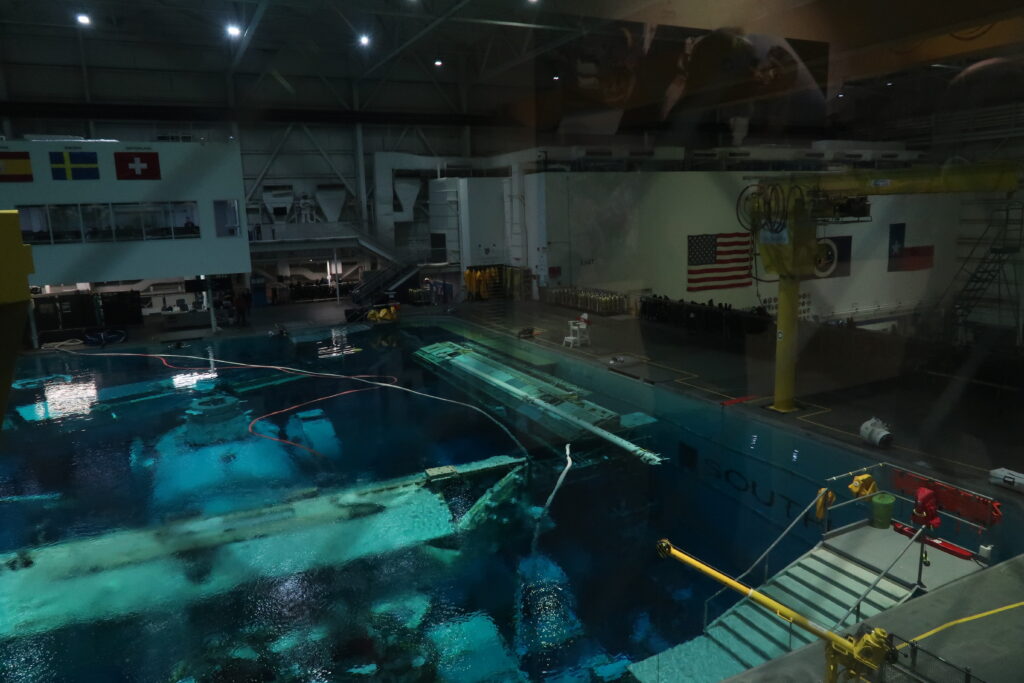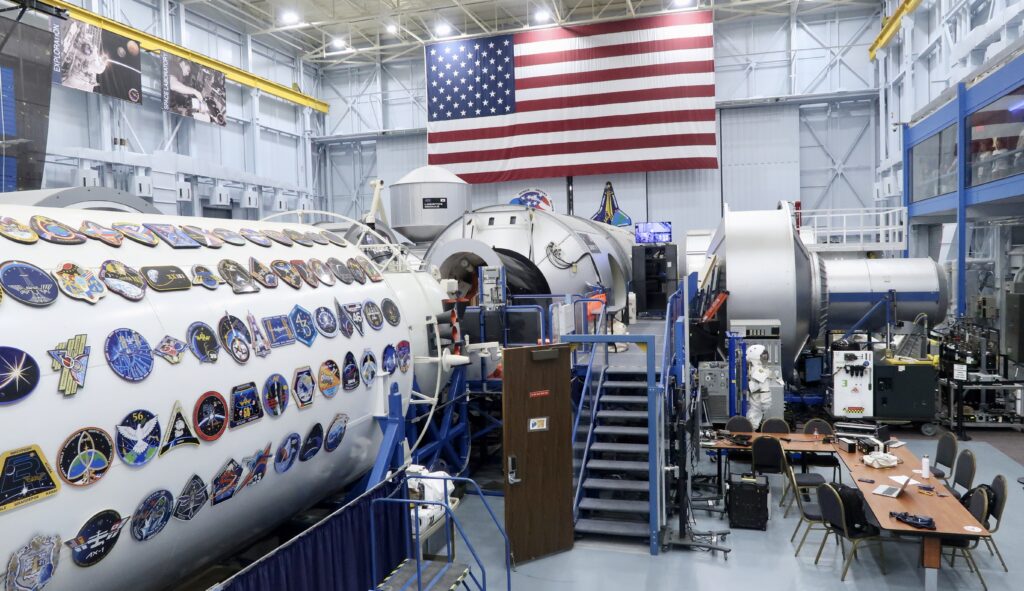Space Center Houston (SCH) sits across a small street from the Johnson Space Center. It is the SCH where we walk to before 9:00 am this morning, after leaving our car in the hotel parking lot a block away.

HSC houses information and artifacts from all the space programs in the US. Outside the building sits a 747 with a space shuttle atop it. Quite an impressive sight. The airplane was used at the end of the shuttle program to transport shuttles from California, where they land, back to Florida, where they take off, but the shuttle is a mock-up and wasn’t flown. We go inside both to get a sense of the size of the vehicles.
We wander the exhibits in the SCH, through the Gemini, Apollo, Shuttle eras and the future plans for the Moon and Mars. We see flight suits worn by various astronauts and sometimes actual equipment and vehicles and sometimes mock-ups. I read a lot of the information, an unusual act for me. It is fascinating!
From SCH, tram tours and VIP tours are lead onto the grounds of Johnson Space Center. The tram tours take guests to either Apollo Mission Control or the Rocket Park and Saturn V. There are morning and afternoon VIP tours that go to different destinations.

At 11:20 we board a tram tour to the Historic Apollo Mission Control Center. The computer monitors, screens, desks, including ashtrays and cigarette butts look like the people just stepped away from the room. The room was restored to its historic look and is kept as a museum piece. We watch the first moon landing on TVs in the historic VIP sitting area. Most folks would not have been alive back in 1969, but Murray and I would have watched it on TV when it happened.

We return from the tram tour, grab a quick sandwich for lunch and join the 1:00 VIP tour for the afternoon. The reason behind this tour is a stop at the NBL, Neutral Buoyancy Lab. Yup, the big pool! The pool is about 220 feet by 100 feet by 40 feet deep and holds about 6 million gallons of water. Submerged in the pool are sections of the ISS, the International Space Station. Astronauts learn and practice space walks in the pool as performing these in water is very similar to being in space. Each astronaut is supported by six scuba divers who supply tools, video and support for emergencies. A session lasts between 6 and 8 hours as that is how long a space walk will last. The divers are exchanged every two hours as they do get cold, whereas the astronauts’ suits are temperature controlled so they do not get cold. We could see bubbles on the surface so there were astronauts and divers in the pool at the time.

Our next stop is the Jake Garn Mission Simulator and Training Facility where we see the T38 Talon flight simulator. All astronauts are required to learn how to fly these planes and to maintain a certain number of hours either in the simulator or flying. We also learn about the toilets on space craft, and how one has to train for this piece of equipment.

Our last stop is to view sections of the ISS that are mocked up inside a large hangar. These are used for training also. We see a Soyuz module which is very tiny inside and actual space suits worth about 50 million dollars each and are worn 50 times before being retired and used for training purposes.

The fellow leading the tour has immense knowledge and it is nice to be able to ask him all sorts of questions. The group of 11 asks a range of questions and we hear many interesting stories and facts.
If you are thinking of going to SCH and the Johnson Space Center, I would recommend a VIP tour for a more in depth view of astronaut training. The day was very rewarding and I enjoyed it immensely.
